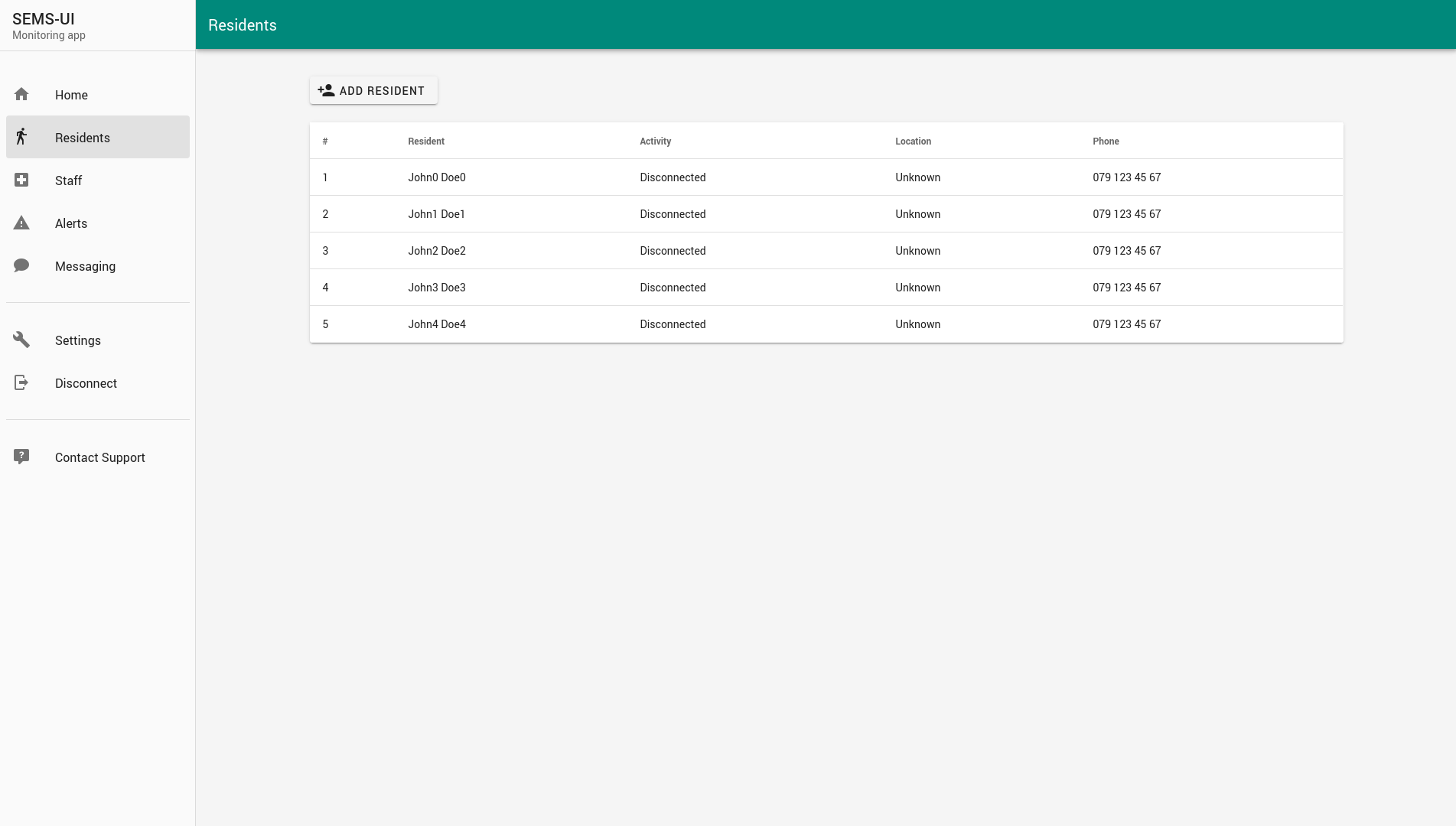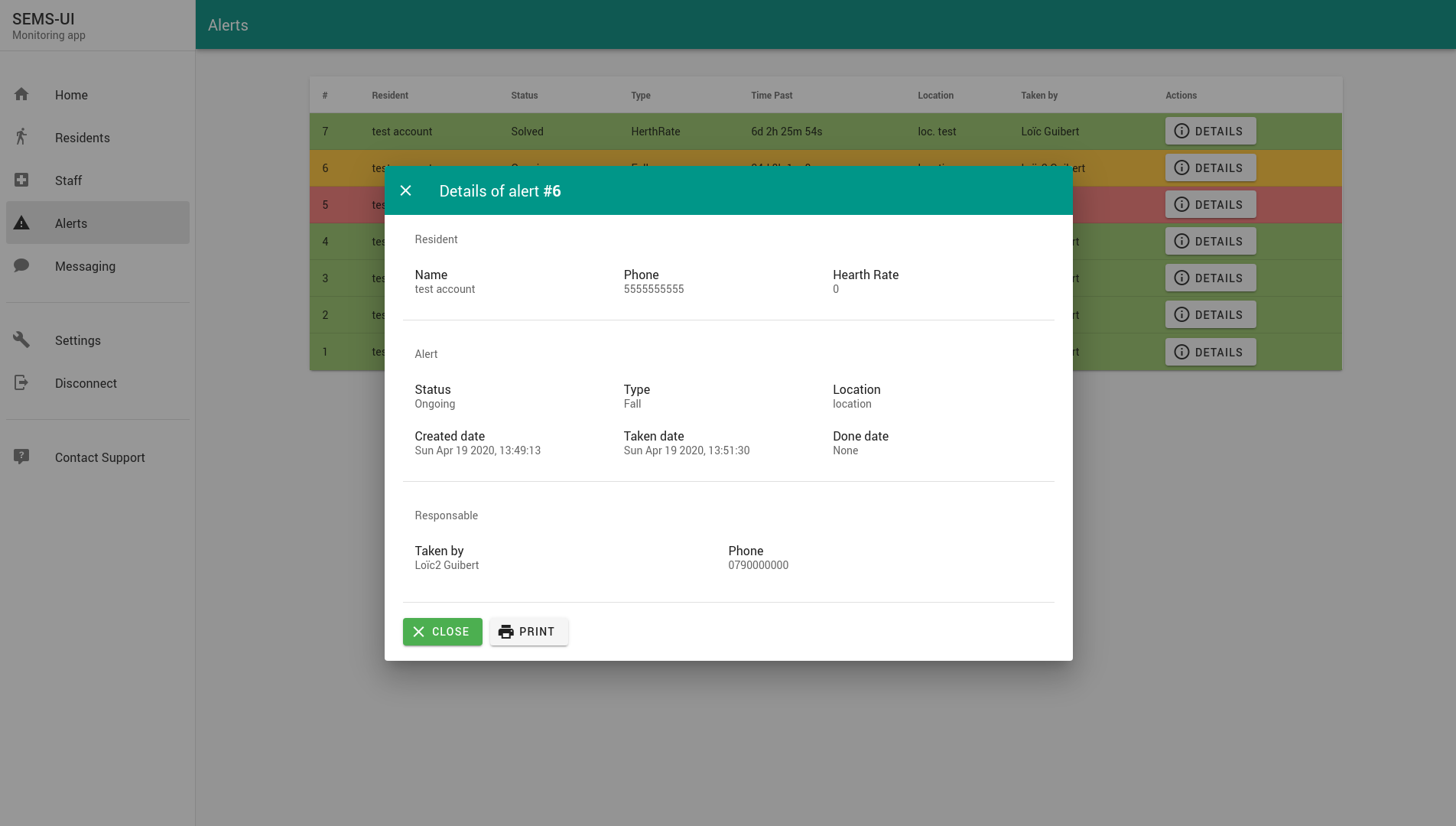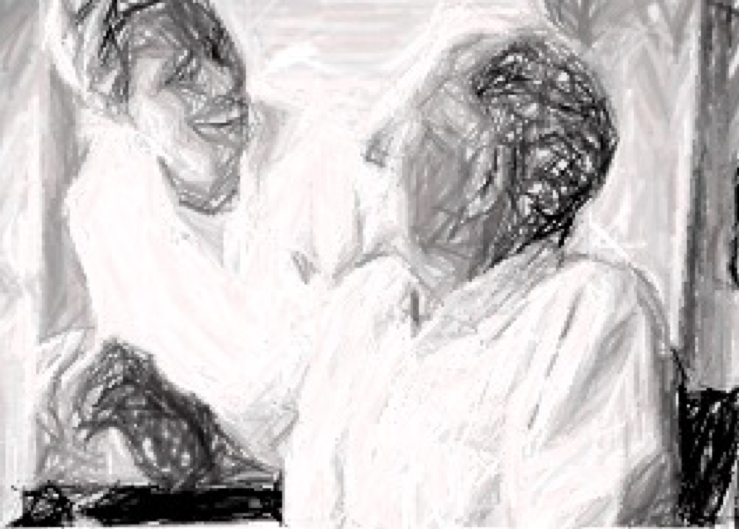RMS - Resident Monitoring System
The Project:
The project is developed by the department of Computer science in the School of Engineering and Architecture of Fribourg and realised by the team of students, assistants and professor:
- Aurelien Etienne - Bsc in computer science
- Wiliam Greppi - Bsc in computer science
- Rafic Galli - Master in computer science
- Nicolas Zurbuchen - Master in computer science
- Armando Koljaj - Bsc Student
- Sylvain Renaud - Master in computer science
- Loïc Guibert - Bsc in computer science
- Dr. Pascal Bruegger - prof. and project coordinator
Summary
The situation in hospitals, nursing homes and homes for mentally challenged people is becoming more and more difficult. The medical staff and special educators are often responsible for an increasingly large number of residents and can no longer spend as much time with each resident as before. The risk of not noticing or being able to respond to problems increases proportionately to the number of residents per medical staff member.
Moreover, it is sometimes difficult for an elderly person to leave an independent life for a life in a nursing home. Overnight, the person finds themselves in a structure where activities, meals, and care are fixed in time and where freedom is relatively restricted. But, the reality is that these people need regular medical care or are no longer able to manage by themselves for physical or mental (e.g. Alzheimer) reasons. The risk of injuries, falls, loss of consciousness or simply not being able to manage their health (e.g. take medication) leads to the decision to place the person in a socio-medical environment.
To be able to monitor residents in a none-intrusive manner would provide a certain degree of independence, safety and well-being for the residents and also relieve some of the pressure on nurses and educators. The ideal monitoring system should in fact be an ecosystem that includes sensors that can localise and detect resident’s activities and collect physiological data, a way of sending regular updates about the situation of the residents they take care of to medical staff and a central monitoring system for both residents and medical staff and a logic to decide the most appropriate available person to intervene in case of problems with a resident.
The project we propose aims to explore solutions that blend new technologies with a respect for human relationships in the context of a nursing home by putting into place an intelligence environment that monitors, in a none-intrusive way, the situation of the resident in a broad sense. By situation, we mean both the physiological state, the activity and the location of the person.
Focus:
An ecosystem of 3 prototype applications, the result of three separate HEIA bachelor projects, has been developed.
First, there is the Resident Monitoring Mobile App (RMMA) and Smartwatch Resident Monitoring Mobile App (SRMA) projects, which collects 5 main pieces of information: the person's identity, heart rate, activity, location and drug reminder. This application is able to generate alarms when abnormal behaviour occurs (e.g. excessive heart rate or suspicious activity). All information, including alarms, is sent to a server that is part of the second project: SEMS (Smart Environment Monitoring System). The purpose of the server is to centralise the information about the residents and to manage the alarms coming from the resident’s application. The decision-making process makes it possible to choose the right person for an intervention with the resident: either the nearest person or the person most competent to handle the problem. The third project consists of a mobile application for medical staff (HMMA: Health Monitoring Mobile App). This application allows staff to get data about residents and receive alarms from residents whose medical person is responsible. This is done through the server. Among other things, it allows the server to be informed about the availability of medical personnel. The two mobile applications can communicate with each other and transmit messages. Together, the three projects form a complete ecosystem that creates an intelligent environment which takes into account the activities
Architecture:
As mentioned in the summary, the RMS project is a continuation of 3 bachelor projects carried out at the HEIA. The students have created 3 separate prototypes: SEMS, RMMA-SRMA, HMMA.

The RMMA and HMMA mobile applications communicate through
a server which logs all exchanges between the two
applications. The students have limited their projects to
a nursing home and defined a residential perimeter made of
rooms and corridors
RMMA – Resident Monitoring Mobil App:
Student: Aurélien Etienne, Sylvain Renaud
The goal of the resident mobile app is to monitor the resident’s location, activity, and heart rate in real time and send this information to the medical personnel (nurse, doctor, educator) through a server. The location, activity and cardiac frequency are especially used to raise alarms. If the resident is out of a given perimeter, shows an abnormal heart rate or exhibits an abnormal or suspicious activity, an alarm is immediately sent to the server. An basic algorithm aggregating the 3 parameters has been developed for the handling the alarm. This application has been developed especially for people who are not computer, tablet or smartphone oriented. The interface is intended to be simple and efficient.
The application also has a setting to
remind the resident when he or she has to take medication
and proposes a messaging system that allows to send
free-form or predefined messages.
The cardiac frequency is monitored using a thoracic belt.
The belt communicates with the smartphone via Bluetooth
and required the 2 devices to have at most a few meters
distance between them.

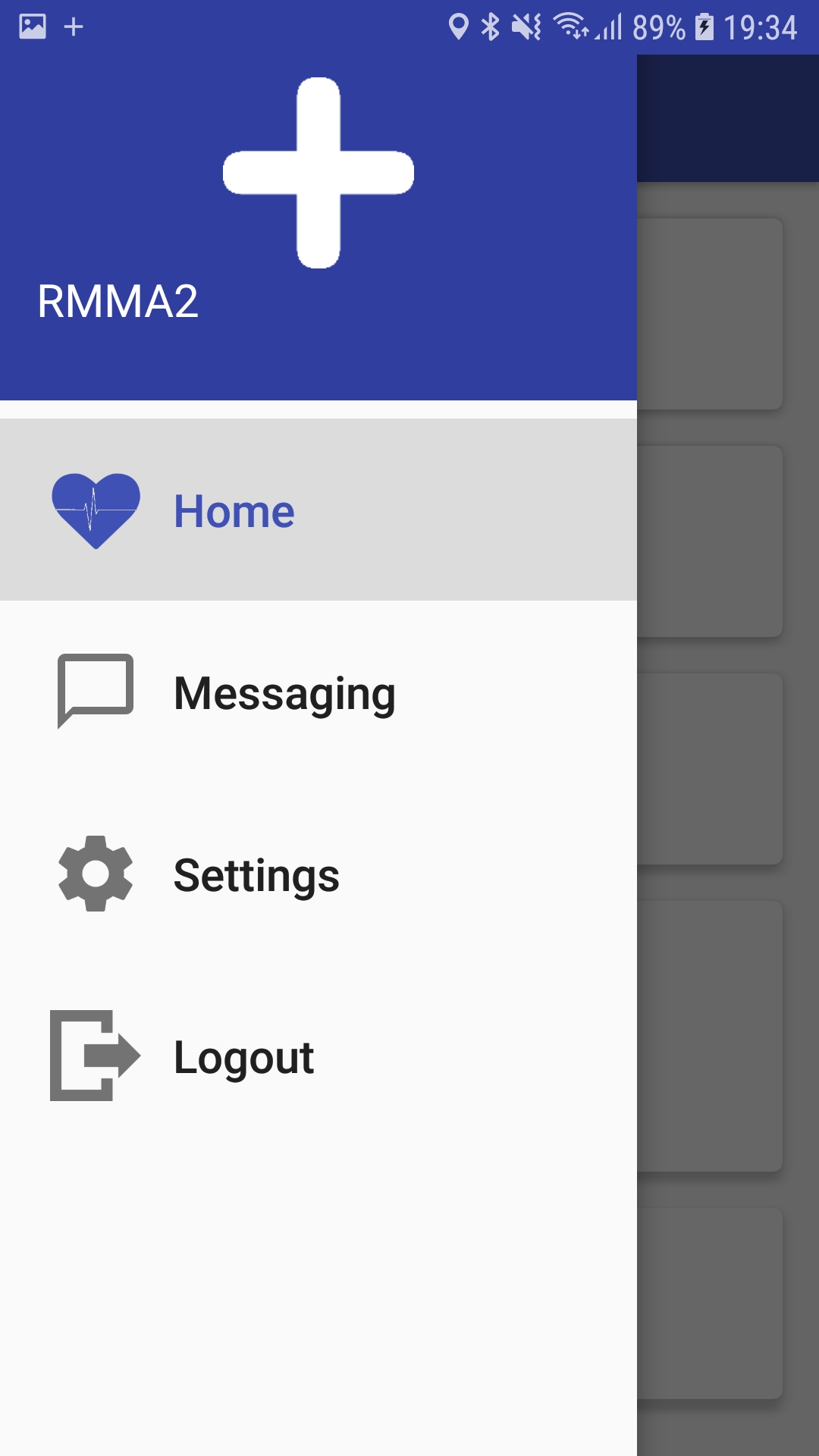



SRMMA – Smartwatch Resident Monitoring Mobil App:
Student: Nicolas Zurbuchen
A Android smartwatch version of RMMA has been developed in order to offer a lighter solution for the monitoring of residents. The same features as RMMA are implemented. With a smartwatch, the resident might feel more comfortable than having to carry a smartphone all the time.Project report:

HMMA – Health Monitoring Mobil App:
Student: Rafic Galli
This Android and iOS mobile application has been developed for the medical personnel. It gives them access to real-time information about residents. This information is the identity of the resident, his/her location, activity, and heart rate, and the list of medications that the resident must take.The application receives the alarm raised by the resident’s application (RMMA) and the nurse or the doctor accepts to handle the alarm or declines it if they cannot take care of the resident at that time. The medical staff can indicate his/her availability to the server through the application, allowing for a more efficient handling of where alarms should be sent. The application also allows the medical staff to communicate with the resident through a messaging system similar to WhatsApp. With this option, the medical staff can receive short messages from the resident or send messages such as medication reminders.
Project Report :

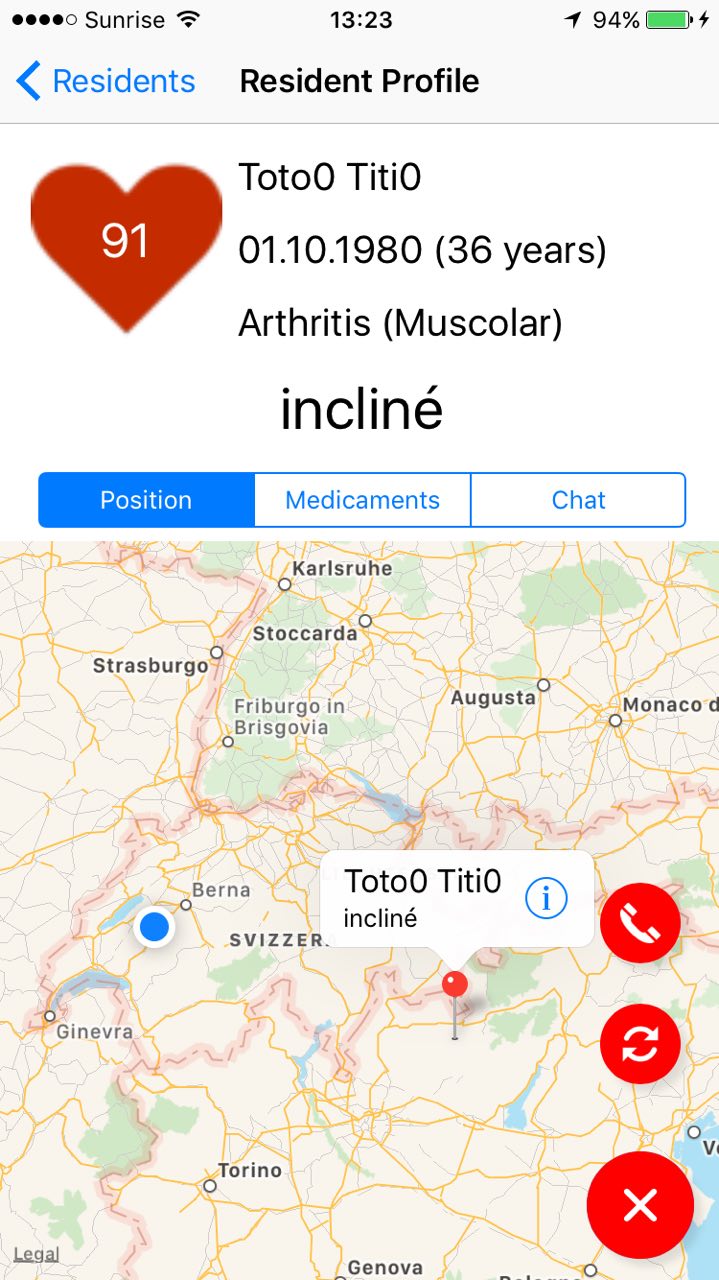
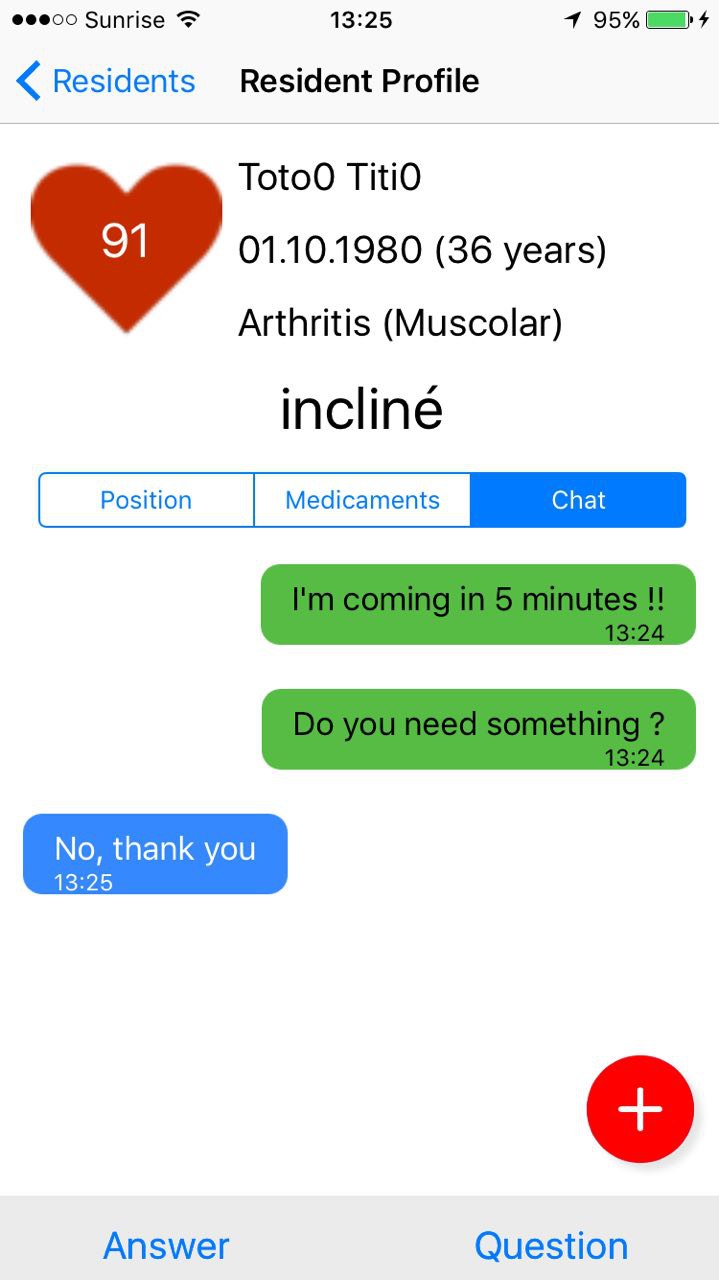
SEMS – Smart Environement Monitoring System and SEMS-UI
Students: Loïc Guibert, William Greppi, Armando Koljaj
To link the previous two applications, we use a server through which all information transits. We chose to set up such technology for a number of reasons:
- It allows for an overview of all actors/entities in the system.
- It graphically shows the position of both the residents and the medical personnel in a web application
- It runs the decision-making algorithm which consists of deciding which person is the most relevant to intervene in case of an alarm.
- It keeps an history of what happens.
The resident application (RMMA) sends
all information to the server, as well as the alarms, in
JSON format. The server logs the information and then
contextually sends them to the medical staff responsible
for the resident. It handles the user’s connection
(medical staff and residents being connected or not). It
sends the information about the alarm generated by the
resident’s smartphone to the medical staff member
responsible and waits for feedback (intervention accepted
or denied). If the medical staff member declines the
intervention then the server sends the alarm to the next
medical staff member in the list.
The server is separated into two parts: The business logic
(FCM, decision algorithm, log) and the web server. The
monitoring and administration web page allows, for
instance, the head nurse to have an overview of the entire
nursing home.

